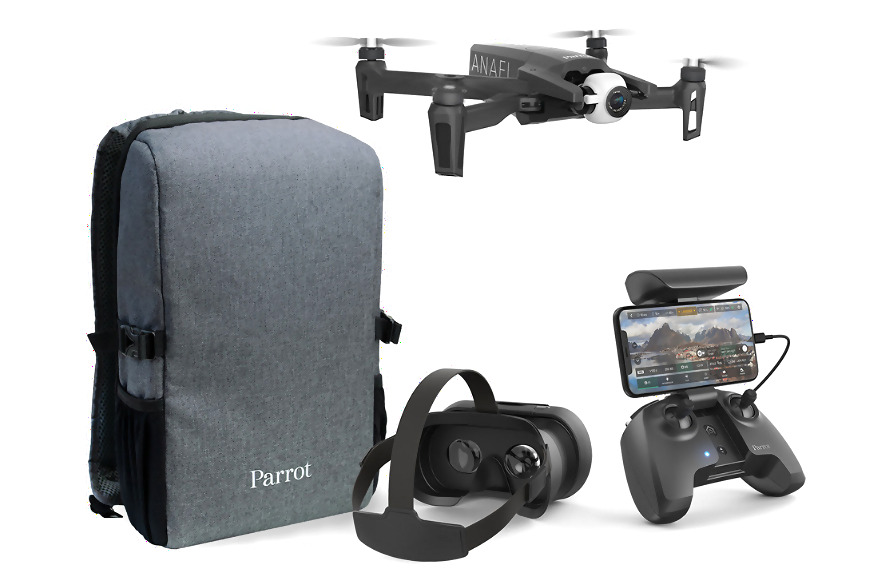
views
Drones are really cool. They are the sort of intersection between cutting edge technology, mobility, smart tech and perhaps even automation that nothing else perhaps comes close to. The simple premise for a drone is that it can take off, it can fly, and it can land. The larger definition includes how this unmanned flying machine can be remotely controlled by software and hardware that could either be a controller or your phone and can fly semi autonomously or autonomously. Within that, there are certain usage scenarios that drones become fit for. Photography enthusiasts bolt on a camera (perhaps a GoPro) to take some beautiful shots from high in the sky. Hobbyists use this as a nice Do It Yourself (DIY) activity which involves modifying and upgrading their drones on lazy Sunday afternoons. Wedding videographers prefer using this for the glory shot, or whatever it is that the video enthusiasts like to call it. The likes of Amazon are even toying with the idea of letting these machines deliver packages to people’s homes. And then there are the more serious tasks where the militaries globally use them for defense and tactical tasks.
You would have probably noticed the sheer variety of the tasks that drones are capable of. Surely one drone type or size cannot do it all. That is why, you probably need to sit down, have a glass or water (or Diet Coke, whatever catches your fancy) and read carefully. Because the journey into the world of drones is as vibrant and dynamic as the screen on that Samsung Android phone which your neighbor is using.
Let us get started with the basic classification, based on the aerial configuration being used. There are Multi-motor drones which are available in different sizes for amateurs, hobbyists and photography usage. There are single motor drones for more professional usage scenarios but are costly to make. There are the fixed wing hybrid drones which are quite stable because of their larger wing-span and ideal for surveillance and mapping tasks as well as carrying heavier payloads—the Amazon Prime Air delivery drone is based on this design philosophy.
Also Read | India’s Drone Policy is Finally Taking Shape, But be Careful About The Weight Before You Buy
Within this larger classification fall the consumer drones.
If you and I wish to buy a drone (regulations and laws permitting), we can take our pick from a plethora of options depending on the size. For starters, there are the Nano Drones which are the smallest in terms of footprint and the lightest in terms of weight. A drone classified in the ‘Nano’ category will have a weight less than or equal to 250 grams. Slightly bigger drones will be classified as ‘Micro’, and will weigh between 250 grams to 2kg. If your drone weighs between 2kg to 25kg, it’ll be classified in the ‘Small’ category. The ‘Medium’ category drones will weigh between 25kg to 150kg. The top-spec category is called ‘Large’, for drones weighing more than 150kg.

Some of the most popular consumer drones in the world include the DJI Mavic Air (430 grams; 21 minutes of flying time and around $919), DJI Phantom 4 Pro V2.0 (1375 grams; 30 minutes flying time and around $1729) and the Parrot ANAFI FPV (375 grams; 26 minutes flight time and around $799).
Then there are the larger drones which are used for military tasks globally, including airspace and ground defence surveillance as well as for potentially spying on enemies—though no one would ever admit that. Then there are also the “professional” drones which are made for various tasks such as education, filming and thermal imaging, to name a few. There is no doubt that it has to either be medium or a large size drones, particularly from the professional category which have been spotted dropping arms, ammunition and satellite phones in various districts of the Indian state of Punjab, next to the border with Pakistan. Simply because they had to carry weight, even though the flight time might not have been a lot.
The drone operation guidelines in India, which were implemented in December, state that any drone above 250 grams will require a Unique Identification Number (UIN), Unmanned Aircraft Operator Permit (UAOP) as well as an import clearance from the Director General of Civil Aviation (DGCA) if you wish to buy one from abroad.
Also Read | Pakistan’s ISI Was Planning 26/11-Like Attack, Drones Dropped Weapons, Grenades in Punjab: Report




















Comments
0 comment